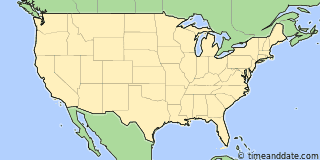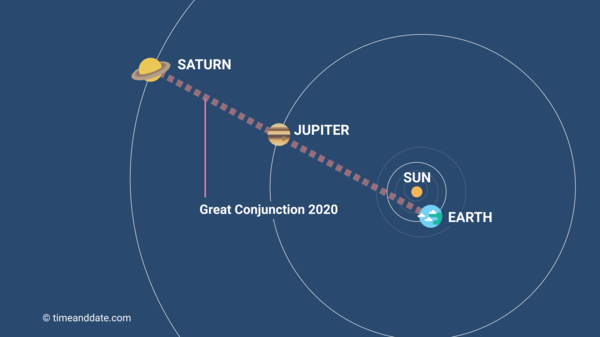| Night Time: | 10 hours, 49 minutes |
|---|---|
| Sunset: | Apr 8 at 7:26 pm |
| End of Twilight*: | Apr 8 at 8:32 pm |
| Start of Twilight*: | Apr 9 at 5:10 am |
| Sunrise: | Apr 9 at 6:15 am |

Solar Max and Aurora Colors
How will the Sun’s solar maximum phase this year affect the colors we see in the aurora?
Our Interactive Night Sky Map simulates the sky above Alaska. The Moon and planets have been enlarged slightly for clarity. On mobile devices, tap to steer the map by pointing your device at the sky. Need some help?
Currently showing previous night. For planet visibility in the coming night, please check again after 12 noon.
Tonight's Sky in Alaska, Apr 8 – Apr 9, 2025
Mercury rise and set in Alaska
Fairly close to the Sun. Visible only before sunrise and/or after sunset.
Mercury is just 22 degrees from the Sun in the sky, so it is difficult to see.
Wed, Apr 9 ↑5:31 am
Time:
Altitude: °
Direction: °
Venus rise and set in Alaska
View just before sunrise.
Venus is close to the Sun and can only be seen shortly before sunrise. Try finding a good, unobstructed view of the horizon. Venus is visible by day, but may be hard to find.
Wed, Apr 9 ↑4:53 am
Time:
Altitude: °
Direction: °
Mars rise and set in Alaska
View after sunset.
Mars can be seen for more than 7 hours after sunset and during the late evening/early night.
Wed, Apr 9 ↓3:18 am
Time:
Altitude: °
Direction: °
Jupiter rise and set in Alaska
View after sunset.
Jupiter can best be seen in the hours just after sunset. Visibility improves as the sunlight fades.
Wed, Apr 9 ↓12:24 am
Time:
Altitude: °
Direction: °
Saturn rise and set in Alaska
Try before sunrise.
Saturn rises shortly before sunrise, so it is very close to the horizon. This makes it very difficult to observe.
Wed, Apr 9 ↑5:35 am
Time:
Altitude: °
Direction: °
Uranus rise and set in Alaska
View after sunset. Bring binoculars.
Uranus can best be seen in the hours just after sunset. Visibility improves as the sunlight fades. You may need binoculars.
Tue, Apr 8 ↓10:32 pm
Time:
Altitude: °
Direction: °
Neptune rise and set in Alaska
Very close to Sun, hard or impossible to see.
Neptune is just 19 degrees from the Sun in the sky, so it is difficult or impossible to see it.
Wed, Apr 9 ↑5:42 am
Time:
Altitude: °
Direction: °
Planets Visible in Alaska
| Planetrise/Planetset, Wed, Apr 9, 2025 | ||||
|---|---|---|---|---|
| Planet | Rise | Set | Meridian | Comment |
| Mercury | Wed 5:31 am | Wed 5:23 pm | Wed 11:27 am | Difficult to see |
| Venus | Wed 4:53 am | Wed 5:18 pm | Wed 11:06 am | Fairly good visibility |
| Mars | Tue 11:52 am | Wed 3:18 am | Tue 7:35 pm | Perfect visibility |
| Jupiter | Tue 9:05 am | Wed 12:24 am | Tue 4:45 pm | Fairly good visibility |
| Saturn | Wed 5:35 am | Wed 5:12 pm | Wed 11:23 am | Difficult to see |
| Uranus | Tue 7:51 am | Tue 10:32 pm | Tue 3:12 pm | Difficult to see |
| Neptune | Wed 5:42 am | Wed 5:38 pm | Wed 11:40 am | Extremely difficult to see |












